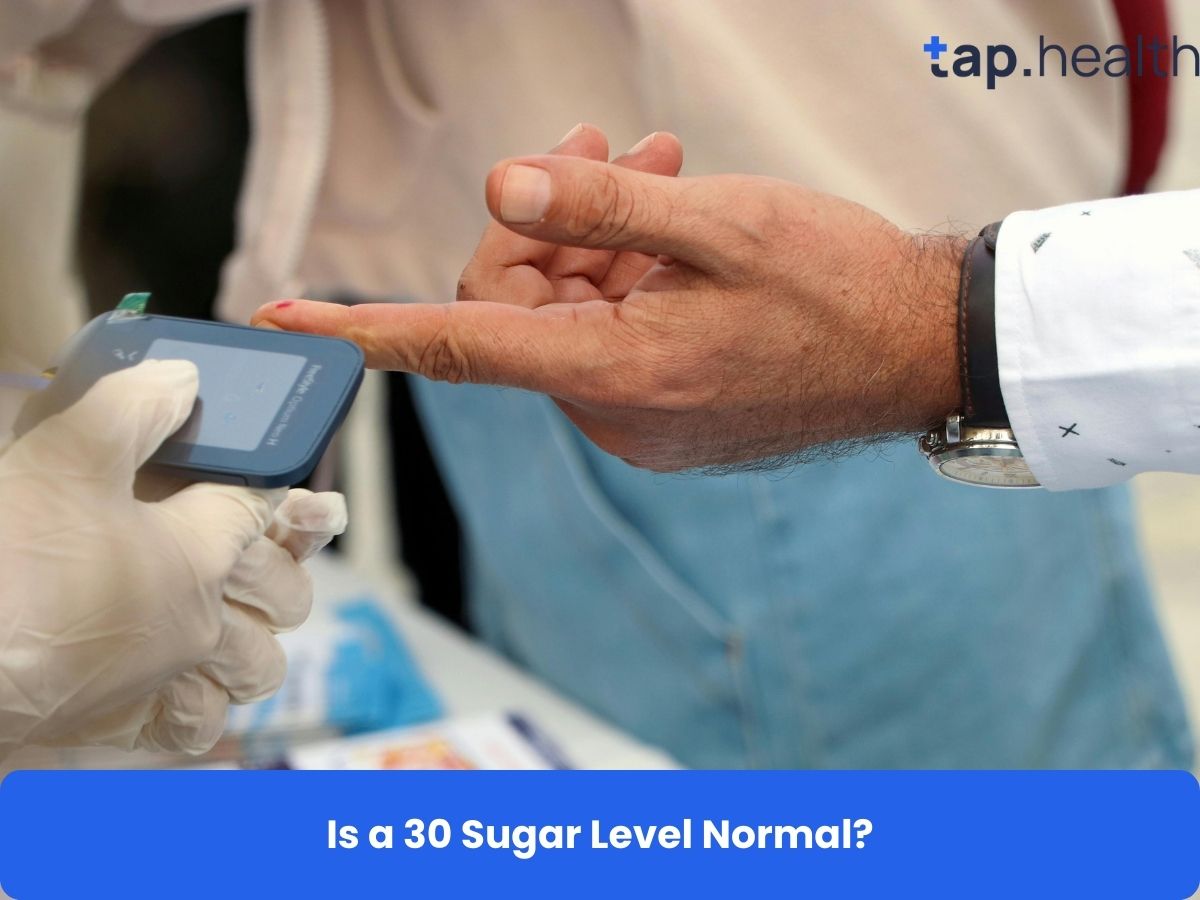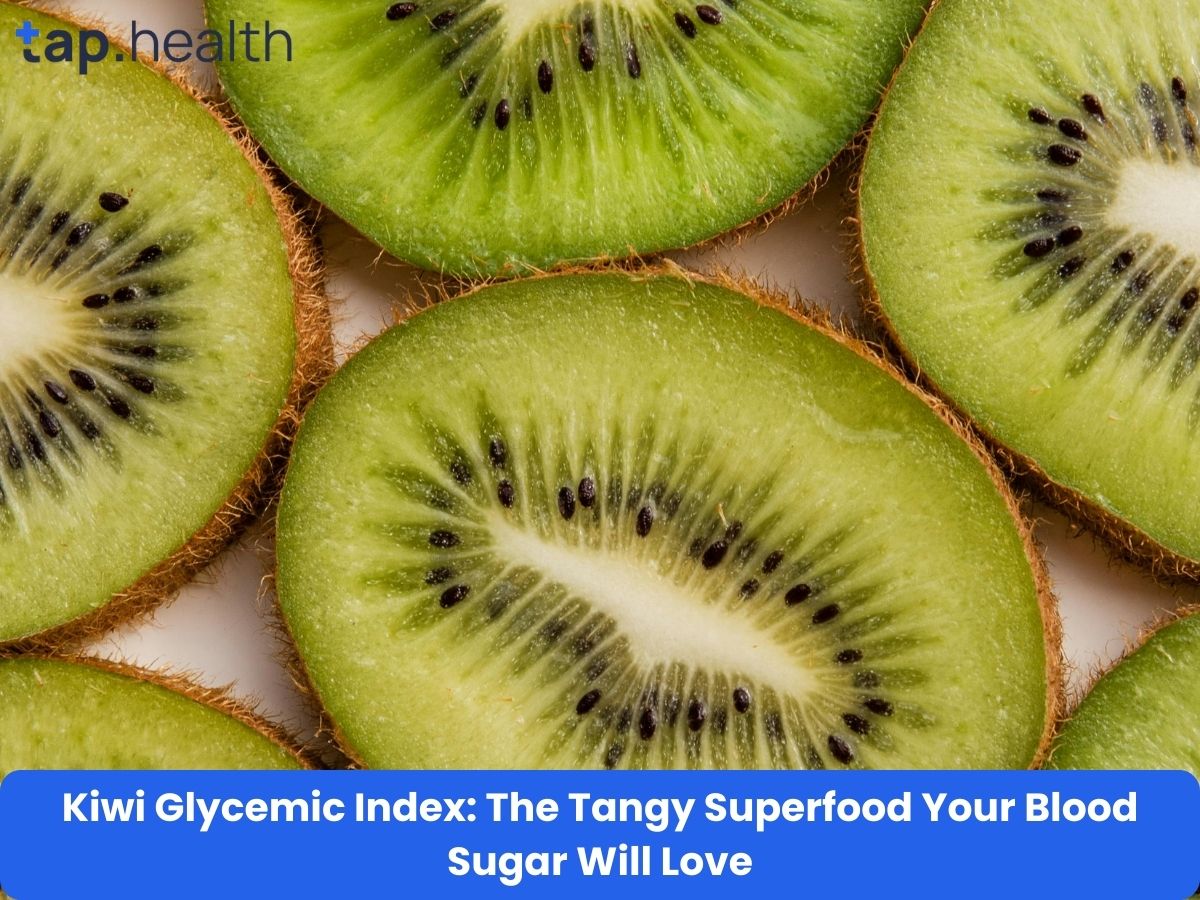Maintaining healthy blood sugar levels is essential for your overall well-being. But what does a blood sugar level of 30 mg/dL mean? Is it normal? In this comprehensive guide, we’ll delve deep into blood sugar levels, focusing on what a 30 mg/dL reading indicates, its causes, symptoms, management strategies, and preventive measures. Whether you’re managing diabetes or simply curious about your health, this guide will provide you with clear, detailed information in an easy-to-understand manner. Let’s explore!
What is Blood Sugar?
Blood sugar, also known as blood glucose, is the main type of sugar found in your blood. It serves as the primary source of energy for your body’s cells. When you consume food, particularly carbohydrates, your body breaks them down into glucose, which then enters your bloodstream. This glucose is transported to your cells with the help of insulin, a hormone produced by the pancreas.
Maintaining blood sugar within a normal range is vital for various bodily functions. Abnormal blood sugar levels, whether too high or too low, can lead to significant health issues.
Understanding Blood Sugar Levels
Blood sugar levels are measured in milligrams per deciliter (mg/dL) of blood. Here’s a general guideline for what different blood sugar levels mean:
- Fasting (no food for at least 8 hours): 70-99 mg/dL
- After meals (1-2 hours after eating): Less than 140 mg/dL
- Random (any time of day): Less than 200 mg/dL
These values can vary slightly depending on different health organizations and individual health conditions. It’s essential to understand these ranges to monitor your health effectively.
Is a 30 mg/dL Sugar Level Normal?
No, a blood sugar level of 30 mg/dL is not normal. In fact, it’s dangerously low and constitutes severe hypoglycemia. Hypoglycemia occurs when blood sugar levels drop below the normal range, typically under 70 mg/dL.
Why 30 mg/dL is Dangerous
A blood sugar level of 30 mg/dL is considered a medical emergency. At this level:
- Energy Supply: Your body and brain are deprived of the necessary glucose to function correctly.
- Brain Function: The brain relies heavily on glucose. A significant drop can impair cognitive functions, leading to confusion, seizures, or even loss of consciousness.
- Physical Health: Severe hypoglycemia can cause trembling, sweating, and heart palpitations, among other symptoms.
Immediate action is required to raise blood sugar levels and prevent life-threatening complications.
Causes of Low Blood Sugar (Hypoglycemia)
Understanding the causes of hypoglycemia is crucial for prevention and management. Here are the primary factors that can lead to a blood sugar level as low as 30 mg/dL:
1. Diabetes Medications
- Insulin Overdose: Taking more insulin than needed can cause blood sugar levels to plummet.
- Sulfonylureas: These medications stimulate insulin release and can sometimes cause hypoglycemia if not dosed correctly.
2. Skipping Meals or Undereating
- Missed Meals: Not eating enough or skipping meals can lead to a lack of glucose in the bloodstream.
- Irregular Eating Patterns: Eating irregularly can disrupt blood sugar balance.
3. Excessive Alcohol Consumption
- Alcohol and Glucose Production: Drinking alcohol without eating can prevent the liver from releasing stored glucose, leading to hypoglycemia.
- Liver Function: Excessive alcohol can impair liver function, affecting glucose regulation.
4. Hormonal Deficiencies
- Adrenal Insufficiency: Low levels of cortisol can affect blood sugar levels.
- Growth Hormone Deficiency: Can influence metabolism and glucose balance.
5. Critical Illnesses
- Liver Disease: Impaired liver function affects glucose production.
- Kidney Disorders: Can interfere with insulin clearance and glucose metabolism.
- Tumors: Rare tumors like insulinomas can produce excess insulin, causing hypoglycemia.
6. Other Medications
- Beta-Blockers: Can mask the symptoms of hypoglycemia.
- Quinine: Used to treat malaria, can cause hypoglycemia in some cases.
7. Intensive Exercise
- Increased Glucose Usage: Strenuous or prolonged exercise can deplete glucose stores, especially if not balanced with adequate nutrition.
Symptoms of Low Blood Sugar
Recognizing the symptoms of low blood sugar is essential for timely intervention. Symptoms can vary based on the severity of hypoglycemia.
Mild to Moderate Symptoms
- Shakiness: Feeling jittery or trembling.
- Sweating: Unexplained perspiration, especially cold sweats.
- Rapid Heartbeat: Noticeably fast heart rate.
- Dizziness or Lightheadedness: Feeling faint or unsteady.
- Hunger: Sudden, intense hunger pangs.
- Irritability or Mood Swings: Unexpected changes in mood.
Severe Symptoms
- Confusion: Difficulty thinking clearly or concentrating.
- Blurred Vision: Trouble seeing clearly or double vision.
- Weakness: Unusual fatigue or muscle weakness.
- Seizures: Involuntary muscle contractions and loss of control.
- Loss of Consciousness: Fainting or unresponsiveness.
A blood sugar level of 30 mg/dL typically presents severe symptoms and requires immediate medical attention.
Managing Low Blood Sugar
Managing low blood sugar involves both immediate actions to raise blood sugar levels and long-term strategies to prevent future episodes.
Immediate Actions
When experiencing hypoglycemia, quick intervention is necessary to restore blood sugar to a safe level.
1. Consume Fast-Acting Carbohydrates
- Glucose Tablets: Designed specifically to raise blood sugar quickly. Typically, 15 grams are recommended.
- Sugary Drinks: Such as 4 ounces of fruit juice (orange or apple) or regular soda (not diet).
- Candy: Like hard candies or jellybeans. Avoid sugar-free candies as they don’t raise blood sugar effectively.
- Honey or Syrup: A tablespoon of honey or syrup can also be effective.
2. Wait and Recheck
- Timeframe: Wait about 15 minutes after consuming carbohydrates.
- Recheck Levels: Use a glucose meter to ensure blood sugar is rising. If levels are still low, consume another 15 grams of carbohydrates.
3. Follow-Up with a Snack
- Balanced Snack: Once blood sugar levels stabilize, eat a small snack containing both carbohydrates and protein, such as:
- Peanut butter on crackers.
- A slice of bread with cheese.
- Yogurt with a handful of nuts.
4. Avoid Certain Foods
- Complex Carbohydrates Alone: These take longer to digest and won’t provide immediate relief.
- High-Fat Foods: Can slow down the absorption of sugar, delaying the rise in blood sugar.
Long-Term Strategies
Preventing future hypoglycemia involves proactive management of your health and lifestyle.
1. Monitor Blood Sugar Regularly
- Frequent Testing: Especially before and after meals, before and after exercise, and before bedtime.
- Use a Glucose Log: Keep track of your readings to identify patterns and make necessary adjustments.
2. Balanced Diet
- Regular Meals: Eat at consistent times each day to maintain steady blood sugar levels.
- Balanced Macronutrients: Include a mix of carbohydrates, proteins, and fats in every meal to slow glucose absorption.
- Portion Control: Avoid overeating or undereating, which can disrupt blood sugar balance.
3. Medication Management
- Follow Prescriptions: Take diabetes medications exactly as prescribed by your healthcare provider.
- Consult Before Changes: Always discuss with your doctor before adjusting doses or adding new medications.
4. Limit Alcohol Consumption
- Moderation: If you drink, do so in moderation and always with food.
- Check Interactions: Some medications can interact with alcohol, increasing the risk of hypoglycemia.
5. Educate Yourself and Others
- Know the Signs: Be aware of hypoglycemia symptoms and how to respond.
- Inform Family and Friends: Ensure those around you know how to help in case of an emergency.
6. Manage Stress
- Stress Reduction Techniques: Practices like meditation, deep breathing, and yoga can help maintain stable blood sugar levels.
- Adequate Sleep: Ensure you get enough rest, as lack of sleep can affect blood sugar regulation.
When to Seek Medical Help
A blood sugar level of 30 mg/dL is a medical emergency. Immediate medical intervention is crucial to prevent life-threatening complications.
Situations Requiring Immediate Medical Attention
- Severe Symptoms: Such as seizures, loss of consciousness, or inability to swallow.
- Persistent Hypoglycemia: If blood sugar remains low despite initial treatment.
- Unawareness of Symptoms: If you can’t recognize or respond to hypoglycemia symptoms.
- Recurrent Episodes: Frequent low blood sugar episodes despite management efforts.
How to Respond in an Emergency
- Call Emergency Services: Dial 911 or your local emergency number immediately.
- Administer Glucagon: If available and trained, use a glucagon injection to raise blood sugar levels.
- Ensure Safety: Make sure the person is lying down and safe from injury, especially if unconscious.
- Do Not Delay: Prompt action can prevent serious complications or death.
Blood Sugar Levels and Diabetes
Understanding blood sugar levels is particularly important for individuals with diabetes, a chronic condition that affects how your body regulates glucose.
Types of Diabetes
1. Type 1 Diabetes
- Autoimmune Condition: The body attacks and destroys insulin-producing cells in the pancreas.
- Insulin Dependency: Individuals require insulin therapy to survive.
- Onset: Often diagnosed in children and young adults.
2. Type 2 Diabetes
- Insulin Resistance: The body doesn’t use insulin properly.
- Lifestyle Factors: Often linked to obesity, poor diet, and lack of exercise.
- Management: Can include lifestyle changes, oral medications, and sometimes insulin.
3. Gestational Diabetes
- Pregnancy-Related: Develops during pregnancy and usually resolves after childbirth.
- Risk Factors: Overweight, family history of diabetes, previous gestational diabetes.
- Management: Diet, exercise, and monitoring blood sugar levels.
Importance of Blood Sugar Control
Maintaining blood sugar within target ranges is crucial to prevent both short-term and long-term complications.
Short-Term Issues
- Hypoglycemia: Low blood sugar can cause immediate health risks.
- Hyperglycemia: High blood sugar can lead to fatigue, irritability, and dehydration.
Long-Term Complications
- Cardiovascular Disease: Increased risk of heart attacks and strokes.
- Nerve Damage (Neuropathy): Can cause pain, tingling, and loss of sensation.
- Kidney Damage (Nephropathy): Can lead to kidney failure.
- Eye Problems (Retinopathy): Risk of blindness and other vision issues.
- Foot Problems: Increased risk of infections and amputations due to poor circulation and nerve damage.
Proper blood sugar management helps prevent these complications and enhances the quality of life.
How to Test Your Blood Sugar
Regular testing is a cornerstone of effective blood sugar management. Here’s a step-by-step guide on how to test your blood sugar levels at home.
1. Obtain a Glucose Meter
- Types: Traditional glucometers, continuous glucose monitors (CGMs).
- Availability: Can be purchased at pharmacies or online.
- Insurance: Check if your insurance covers it.
2. Prepare the Meter
- Insert Test Strip: Follow the manufacturer’s instructions.
- Ensure Cleanliness: Make sure your hands are clean to avoid contamination.
3. Prick Your Finger
- Use a Lancet: A small, sterile needle used to obtain a blood sample.
- Prick Site: Side of the fingertip is recommended to reduce discomfort.
- Amount of Blood: A small drop is sufficient for testing.
4. Apply Blood to the Strip
- Touch Blood to Strip: Allow the blood to absorb fully.
- Wait for Result: The meter will display the blood sugar level within seconds.
5. Read the Result
- Record the Level: Note the reading in your glucose log.
- Interpret the Result: Compare it to your target range.
Note: Always follow the specific instructions provided with your glucose meter for accurate results.
Dietary Tips for Maintaining Healthy Blood Sugar
Your diet plays a significant role in managing blood sugar levels. Here are detailed dietary strategies to help maintain stable glucose levels.
Choose Complex Carbohydrates
Complex carbohydrates digest more slowly, providing a steady release of glucose into the bloodstream.
- Whole Grains: Brown rice, quinoa, whole wheat bread, barley.
- Legumes: Beans, lentils, chickpeas, peas.
- Vegetables: Especially non-starchy ones like broccoli, spinach, and kale.
Benefits:
- Stable Blood Sugar: Prevents rapid spikes and crashes.
- High in Fiber: Aids digestion and promotes satiety.
- Nutrient-Rich: Provide essential vitamins and minerals.
Include Protein
Protein helps slow the absorption of carbohydrates, leading to more stable blood sugar levels.
- Lean Meats: Chicken, turkey, lean beef, pork.
- Fish: Salmon, mackerel, sardines, trout.
- Plant-Based Proteins: Tofu, tempeh, edamame, lentils.
- Dairy Products: Greek yogurt, cottage cheese, low-fat milk.
Benefits:
- Satiety: Keeps you feeling full longer.
- Muscle Maintenance: Essential for muscle repair and growth.
- Metabolic Support: Supports various bodily functions.
Healthy Fats
Incorporating healthy fats can help regulate blood sugar and support overall health.
- Nuts and Seeds: Almonds, walnuts, chia seeds, flaxseeds.
- Avocado: Rich in monounsaturated fats.
- Olive Oil: Use in cooking or as a salad dressing.
- Fatty Fish: Provides omega-3 fatty acids.
Benefits:
- Improved Insulin Sensitivity: Enhances how your body uses insulin.
- Heart Health: Reduces the risk of heart disease.
- Anti-Inflammatory: Helps reduce inflammation in the body.
Fiber-Rich Foods
Fiber slows the digestion of carbohydrates, preventing rapid increases in blood sugar.
- Fruits: Berries, apples, pears, oranges.
- Vegetables: Leafy greens, carrots, bell peppers, Brussels sprouts.
- Whole Grains: Oats, barley, brown rice, whole wheat.
- Legumes: Beans, lentils, chickpeas.
Benefits:
- Digestive Health: Prevents constipation and promotes regular bowel movements.
- Weight Management: Helps control appetite and reduce overeating.
- Cholesterol Levels: Lowers bad cholesterol (LDL) levels.
Limit Simple Sugars
Reducing simple sugars helps prevent rapid spikes in blood sugar levels.
- Avoid Sugary Drinks: Sodas, energy drinks, sweetened teas, and juices.
- Limit Sweets: Candy, pastries, ice cream, and other sugary desserts.
- Check Labels: Be aware of hidden sugars in processed foods like sauces, dressings, and cereals.
Benefits:
- Prevent Hypoglycemia: Avoids sudden drops in blood sugar after initial spikes.
- Weight Control: Reduces calorie intake from empty sugars.
- Dental Health: Decreases the risk of cavities and tooth decay.
Exercise and Blood Sugar Levels
Physical activity is a powerful tool for managing blood sugar levels. Regular exercise can enhance your body’s ability to regulate glucose effectively.
Benefits of Exercise
1. Improves Insulin Sensitivity
- Enhanced Uptake: Muscles become more efficient at using glucose, reducing blood sugar levels.
- Lower Insulin Resistance: Helps prevent or manage type 2 diabetes.
2. Aids Weight Management
- Calorie Burning: Helps burn excess calories, aiding in weight loss or maintenance.
- Fat Reduction: Reduces body fat, which is linked to improved insulin sensitivity.
3. Enhances Overall Health
- Heart Health: Reduces the risk of cardiovascular diseases.
- Muscle Strength: Builds and maintains muscle mass.
- Mental Health: Improves mood and reduces stress and anxiety.
Types of Exercise
1. Aerobic Exercise
- Examples: Walking, running, cycling, swimming, dancing.
- Benefits: Improves cardiovascular health, increases calorie burn, and enhances endurance.
- Recommendation: Aim for at least 150 minutes of moderate-intensity aerobic exercise per week.
2. Strength Training
- Examples: Weightlifting, resistance band exercises, bodyweight exercises like push-ups and squats.
- Benefits: Builds muscle mass, increases metabolic rate, and improves insulin sensitivity.
- Recommendation: Include strength training exercises at least two days per week.
3. Flexibility Exercises
- Examples: Yoga, stretching, Pilates.
- Benefits: Enhances flexibility, reduces muscle tension, and improves posture.
- Recommendation: Incorporate flexibility exercises into your routine 2-3 times per week.
Exercise Tips for Blood Sugar Management
- Consistency: Regular exercise is more effective than sporadic intense workouts.
- Balance: Combine different types of exercises for comprehensive benefits.
- Monitor Levels: Check your blood sugar before and after exercise to understand how your body responds.
- Stay Hydrated: Drink plenty of water to stay hydrated during workouts.
- Snack Smart: If necessary, have a small snack before exercising to prevent hypoglycemia.
Monitoring and Managing Blood Sugar Levels
Effective management of blood sugar involves regular monitoring and implementing strategies to maintain levels within target ranges.
Set Target Blood Sugar Levels
- Personalized Goals: Work with your healthcare provider to determine your ideal blood sugar targets based on factors like age, health status, and diabetes type.
- Adjust as Needed: Targets may vary throughout the day, especially before and after meals or exercise.
Keep a Blood Sugar Log
- Track Readings: Record your blood sugar levels at different times of the day.
- Identify Patterns: Look for trends that indicate how food, activity, and medications affect your levels.
- Share with Healthcare Provider: Use your log to discuss your management plan with your doctor.
Use Technology
1. Continuous Glucose Monitors (CGMs)
- Real-Time Monitoring: Provides continuous blood sugar readings throughout the day and night.
- Alerts: Notifies you of high or low blood sugar levels.
- Data Sharing: Some CGMs allow sharing data with healthcare providers or family members.
2. Smartphone Apps
- Tracking: Apps like MySugr, Glucose Buddy, and others help log blood sugar, meals, and activities.
- Analysis: Provide insights and trends based on your data.
- Reminders: Set reminders for testing, medications, and appointments.
3. Automated Insulin Pumps
- Insulin Delivery: Automatically administers insulin based on blood sugar readings.
- Integration with CGMs: Some pumps integrate with CGMs for more precise management.
Benefits of Technology
- Improved Accuracy: Reduces human error in tracking and recording.
- Convenience: Simplifies the process of monitoring and managing blood sugar.
- Enhanced Communication: Facilitates better communication with healthcare providers.
When to Consult a Healthcare Professional
While managing blood sugar at home is crucial, there are times when professional medical assistance is necessary.
Situations Requiring Medical Attention
- Persistent Low or High Blood Sugar: Levels that remain abnormal despite initial treatment.
- Unexplained Hypoglycemia: Low blood sugar without an obvious cause.
- Severe Symptoms: Such as seizures, loss of consciousness, or inability to swallow.
- New Diagnosis: If you suspect you have diabetes or another condition affecting blood sugar.
- Medication Side Effects: If you experience adverse effects from diabetes medications.
How Healthcare Professionals Can Help
- Diagnosis: Identifying underlying causes of abnormal blood sugar levels.
- Treatment Plans: Developing personalized management strategies.
- Medication Adjustment: Fine-tuning medications to prevent hypoglycemia or hyperglycemia.
- Education: Providing resources and training on blood sugar management.
- Support Services: Referring you to dietitians, diabetes educators, and support groups.
Frequently Asked Questions (FAQ) on Is a 30 Sugar Level Normal?
To further assist you in understanding blood sugar levels and the implications of a 30 mg/dL reading, we’ve compiled a list of frequently asked questions. These FAQs address common concerns and provide additional insights to help you manage your blood sugar effectively.
1. What is considered a normal blood sugar level?
A normal blood sugar level typically ranges as follows:
- Fasting (no food for at least 8 hours): 70-99 mg/dL
- After meals (1-2 hours after eating): Less than 140 mg/dL
- Random (any time of day): Less than 200 mg/dL
These ranges can vary slightly based on individual health conditions and guidelines from different health organizations.
2. Can a blood sugar level of 30 mg/dL occur in someone without diabetes?
Yes, while a blood sugar level of 30 mg/dL is most commonly associated with diabetes-related hypoglycemia, it can also occur in individuals without diabetes. Causes may include:
- Critical Illnesses: Severe liver or kidney disease.
- Hormonal Deficiencies: Such as adrenal insufficiency.
- Excessive Alcohol Consumption: Especially without adequate food intake.
- Medications: Certain medications can induce hypoglycemia even in non-diabetics.
If you experience such low levels without a known cause, it’s essential to seek medical attention.
3. What should I do if my blood sugar drops to 30 mg/dL?
A blood sugar level of 30 mg/dL is a medical emergency. Immediate actions include:
- Consume Fast-Acting Carbohydrates: Such as glucose tablets, fruit juice, or regular soda.
- Wait and Recheck: After 15 minutes, recheck your blood sugar levels.
- Follow-Up Snack: If levels remain low, consume a balanced snack with carbohydrates and protein.
- Seek Medical Help: If you cannot raise your blood sugar or experience severe symptoms like seizures or loss of consciousness, call emergency services immediately.
4. What are the long-term risks of frequently low blood sugar levels?
Frequent episodes of hypoglycemia can lead to:
- Reduced Awareness of Symptoms: Making it harder to recognize future low blood sugar episodes.
- Increased Risk of Accidents: Due to impaired cognitive and motor functions during hypoglycemia.
- Heart Problems: Severe hypoglycemia can strain the heart.
- Mental Health Issues: Such as anxiety or fear of future hypoglycemic episodes.
Consistently managing and preventing low blood sugar levels is crucial for long-term health.
5. How can I prevent my blood sugar from dropping too low?
Preventive strategies include:
- Regular Monitoring: Keep track of your blood sugar levels, especially if you’re on insulin or other diabetes medications.
- Balanced Meals: Ensure your diet includes a mix of carbohydrates, proteins, and healthy fats.
- Consistent Meal Timing: Avoid skipping meals and eat at regular intervals.
- Medication Management: Take medications as prescribed and consult your doctor before making any changes.
- Limit Alcohol: Consume alcohol in moderation and always with food.
- Educate Yourself and Others: Understand the signs of hypoglycemia and inform those around you how to help in case of an emergency.
6. Can exercise cause my blood sugar to drop to 30 mg/dL?
Yes, especially if you:
- Exercise Intensively or Prolongedly: Without adequate carbohydrate intake.
- Take Certain Medications: Like insulin or sulfonylureas.
- Do Not Eat Enough: Before or after exercise.
To prevent exercise-induced hypoglycemia:
- Monitor Blood Sugar Levels: Before, during, and after exercise.
- Have a Snack: Consume a carbohydrate-rich snack before exercising if needed.
- Adjust Medications: Consult your healthcare provider about adjusting your medication regimen around exercise times.
7. Are there any warning signs before my blood sugar drops to 30 mg/dL?
Yes, recognizing early symptoms can help prevent severe hypoglycemia. Early warning signs include:
- Shakiness or Trembling
- Sweating
- Hunger
- Irritability or Mood Changes
- Dizziness or Lightheadedness
- Rapid Heartbeat
If you notice these symptoms, take immediate action to raise your blood sugar levels before they drop further.
8. Is a blood sugar level of 30 mg/dL fatal?
A blood sugar level of 30 mg/dL is potentially life-threatening and requires immediate medical intervention. If not treated promptly, severe hypoglycemia can lead to:
- Seizures
- Loss of Consciousness
- Brain Damage
- Death
Timely treatment significantly reduces the risk of fatal outcomes.
9. Can children experience low blood sugar levels like 30 mg/dL?
Yes, children, especially those with type 1 diabetes, can experience severe hypoglycemia. Causes include:
- Incorrect Insulin Dosing
- Skipping Meals
- Excessive Physical Activity
- Illness or Infections
It’s crucial for parents and caregivers to monitor children’s blood sugar levels closely and recognize the symptoms of hypoglycemia to provide timely assistance.
10. What is the difference between hypoglycemia and hyperglycemia?
- Hypoglycemia (Low Blood Sugar): Blood sugar levels drop below the normal range (typically under 70 mg/dL). Symptoms include shakiness, sweating, confusion, and in severe cases, seizures or loss of consciousness.
- Hyperglycemia (High Blood Sugar): Blood sugar levels rise above the normal range (typically over 180 mg/dL after meals). Symptoms include frequent urination, increased thirst, blurred vision, and fatigue. Chronic hyperglycemia can lead to long-term complications like heart disease, nerve damage, and kidney problems.
Balancing blood sugar levels is essential to prevent both hypoglycemia and hyperglycemia.
Conclusion
A blood sugar level of 30 mg/dL is not normal and signifies severe hypoglycemia, which requires immediate medical attention. Understanding blood sugar levels, recognizing the symptoms of hypoglycemia, and implementing effective management strategies are essential for maintaining overall health and preventing complications.
Key Takeaways
- Normal Blood Sugar Ranges: Knowing the standard ranges helps in monitoring your health.
- Recognizing Hypoglycemia: Early detection of symptoms can prevent severe complications.
- Immediate Action: Quick intervention can save lives in cases of severe hypoglycemia.
- Long-Term Management: Balanced diet, regular exercise, and consistent monitoring are crucial.
- Seek Professional Help: Don’t hesitate to consult healthcare providers for personalized care.
By staying informed and proactive, you can effectively manage your blood sugar levels and maintain a healthy, balanced life.
References
- Mayo Clinic: Hypoglycemia (Low Blood Sugar)



